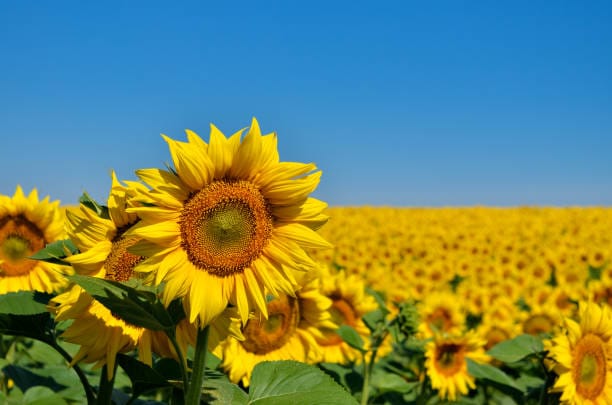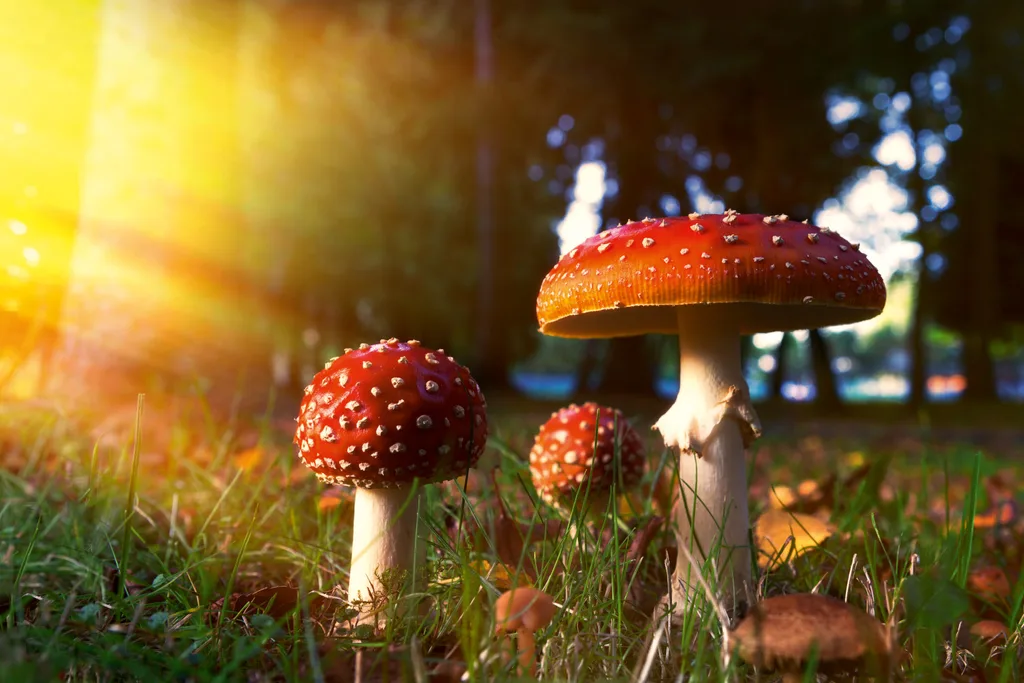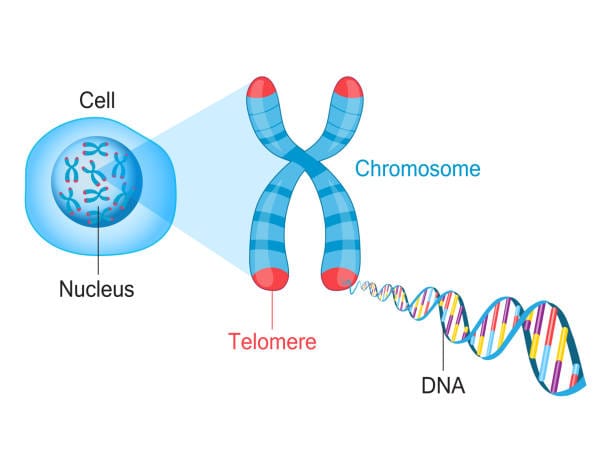Just before dawn, a field of sunflowers stands poised, their green faces still turned to the east, waiting. A hush lies over the world. Then the sun crests the horizon, spilling golden warmth across the landscape. Almost imperceptibly, the sunflowers begin to follow its path across the sky, their broad disks swiveling westward as though powered by hidden gears.
When night falls, they pivot back toward the east again, preparing for the next day’s dance.
We watch plants in wonder, rarely thinking of them as creatures that keep time. They stand rooted, silent, seemingly oblivious to clocks or calendars. Yet they live by an internal schedule as precise as any human chronometer. Their lives are governed not by seconds and minutes ticking away on a watch, but by an ancient rhythm pulsing within each cell—a rhythm woven into the fabric of life itself.
This internal clock, known as the circadian rhythm, is no mere curiosity. It is a profound, universal biological phenomenon, sculpted over billions of years of evolution. Plants do not simply exist in time. They sense it, measure it, and use it to orchestrate their survival. Long before humans invented clocks, plants knew exactly what time it was.
The secret lies hidden in the silent dance of molecules, genes, and proteins, ticking away under the skin of leaves, opening flowers at dawn, closing them at dusk, preparing for the chill of night, the blaze of day, and even the change of seasons. In the green world, time is not merely kept—it is lived.
A Puzzle from the Past
The mystery of timekeeping in plants stretches back to the earliest days of scientific observation. Even before we could peek inside cells or sequence genes, people noticed something uncanny about plants. In the 18th century, a French astronomer named Jean-Jacques d’Ortous de Mairan conducted an experiment that would echo across centuries of science.
De Mairan studied Mimosa pudica—the “sensitive plant,” known for folding its leaves when touched. He placed the plant in total darkness. To his astonishment, even without the sun’s light, the plant’s leaves continued to open during the day and close at night, following a cycle of roughly twenty-four hours.
It was as though the plant carried a little sun inside it.
De Mairan had discovered a profound truth: living organisms possess an internal clock independent of external cues. Centuries later, we would learn this rhythm was not limited to plants. Animals, fungi, even some bacteria keep time. But plants—creatures that cannot run from danger, cannot seek shelter, cannot relocate in search of food—depend on this clock with a particular desperation. For them, knowing when dawn will come is a matter of life and death.
The Dance of Light and Darkness
To understand why plants keep time, one must first grasp the basic reality of their existence. Plants eat sunlight. Through photosynthesis, they transform solar energy into sugars that fuel their growth. Yet sunlight is not a constant. It arrives in a daily rhythm—daylight and darkness. Moreover, the length of day changes with the seasons.
Timing is everything.
A plant must anticipate sunrise to open its leaves and unfurl its flowers, maximizing its solar harvest. It must shut down photosynthesis at dusk, protecting itself from the energy-wasting effects of darkness. It must time its flowering to the right season, ensuring that seeds develop in favorable conditions.
Failure to keep time is not merely inconvenient—it can mean starvation or reproductive failure.
That is why evolution has crafted intricate molecular clocks within plant cells. These internal oscillators tick along in roughly 24-hour cycles, generating biochemical waves that rise and fall like the tides. They synchronize the plant’s inner workings with the Earth’s day-night cycles.
Inside the Plant Clock
What, precisely, is ticking inside a plant?
For decades, scientists struggled to identify the physical machinery of the plant circadian clock. It wasn’t until the late 20th century, with advances in molecular biology, that the curtain was pulled back to reveal a breathtaking molecular choreography.
At the heart of the plant clock lies a feedback loop of genes and proteins. In the model plant Arabidopsis thaliana—a tiny weed beloved by scientists—a trio of key genes called CCA1, LHY, and TOC1 play central roles.
CCA1 (CIRCADIAN CLOCK ASSOCIATED 1) and LHY (LATE ELONGATED HYPOCOTYL) are active in the morning. They produce proteins that suppress the expression of TOC1 (TIMING OF CAB EXPRESSION 1). As the day progresses, the levels of CCA1 and LHY proteins fall. This relief allows TOC1 to ramp up in the evening.
TOC1, in turn, promotes the production of CCA1 and LHY again for the next morning, closing the loop.
This back-and-forth creates oscillations in gene activity that rise and fall over roughly twenty-four hours. These molecular waves ripple outward, regulating thousands of other genes, dictating when a plant should photosynthesize, when it should grow, when it should flower.
But the clock is not merely an internal metronome. It must stay in sync with the external world. Plants use specialized photoreceptors, such as phytochromes and cryptochromes, to sense light’s intensity and color. These photoreceptors feed signals into the clock, ensuring it remains aligned with sunrise and sunset, even as the seasons change.
It is an exquisite, living mechanism—a biochemical timepiece that adjusts itself to the world’s shifting light.
The Secrets of Sunflowers
Few plants capture the poetry of biological timekeeping like sunflowers. Their daily east-to-west movement is known as heliotropism. For years, it was thought this tracking was purely a mechanical response to sunlight. Yet research has revealed that the sunflower’s turning is intimately linked to its circadian clock.
In a 2016 study, scientists at the University of California, Davis, observed that young sunflowers kept in constant darkness continued to swing their heads east to west on a 24-hour rhythm. Their turning slowed and weakened without sunlight, but the rhythm persisted—a signature of internal timing.
Even more astonishing, the sunflower’s clock anticipates dawn. Just before sunrise, the eastward-facing flower heads become more sensitive to light. This ensures they catch the first rays of morning—a critical advantage for maximizing photosynthesis and attracting pollinators.
When sunflowers reach maturity and the heads become heavy with seeds, they stop turning and remain facing east. Morning sunlight warms the flowers, making them more inviting to bees, who prefer warmer blooms. Here, the sunflower’s clock has evolved not merely to track the sun but to serve the deeper needs of reproduction.
Flowers that Know When to Bloom
The timing of flowering is one of the most crucial decisions in a plant’s life. Flower too early, and frost might kill the fragile blooms. Flower too late, and seeds may not mature before winter returns.
Plants solve this problem by integrating their circadian clock with another powerful environmental cue: the length of day, or photoperiod.
In long-day plants like spinach or barley, flowering is triggered when days grow longer than a critical threshold. In short-day plants like chrysanthemums or rice, flowering occurs when days become shorter. The circadian clock measures the length of night and determines whether it exceeds the species-specific threshold for flowering.
A central player in this process is a gene known as CONSTANS (CO). In Arabidopsis, CO’s activity peaks in the late afternoon. If daylight persists into the evening—as it does in summer—CO activates another gene called FT (FLOWERING LOCUS T), triggering flowering. In shorter days, CO expression fades before dusk, and FT remains silent.
Through this intricate molecular conversation, plants translate the cosmic dance of Earth around the sun into the intimate decision of when to bloom. It is timekeeping elevated to an evolutionary art form.
Guardians of the Night
Even in darkness, the plant clock stands vigilant. At night, plants reduce photosynthesis and switch their metabolism to conserve energy. Yet they must continue to produce enough sugars to survive.
Arabidopsis provides a striking example. During the day, it stores sugars as starch in its chloroplasts. At night, it slowly degrades this starch to maintain essential processes. If the night suddenly lengthens—say, due to unexpected cloud cover or shade—the plant recalibrates its starch breakdown rate, ensuring it does not run out of energy before dawn.
This remarkable feat of metabolic accounting depends on the circadian clock. Scientists have shown that plants “measure” the night and adjust their metabolism accordingly. It is as though the plant calculates how many hours of darkness remain and sets a pace for burning its fuel, neither too fast nor too slow.
Failure to keep time leads to disaster. Mutant Arabidopsis plants with defective clocks exhaust their starch reserves before dawn, leading to starvation and stunted growth.
Timekeeping is not merely about knowing the hour. It is about survival.
Rhythms in the Forest
While laboratory studies often focus on tiny Arabidopsis, the principles of circadian rhythms extend to towering giants of the forest.
In tropical rainforests, trees exhibit rhythmic changes in leaf movements, water usage, and growth rates. Lianas, the woody vines that snake up rainforest trees, adjust their water flow to anticipate the hottest parts of the day, preventing dehydration.
In boreal forests, conifers like pines and spruces time their photosynthesis to exploit brief northern summers. Their circadian rhythms help them withstand long winter darkness by entering metabolic dormancy.
Even the spectacular phenomenon of leaf fall in autumn is linked to circadian clocks. As days shorten, photoreceptors inform the plant that winter is approaching. The clock triggers genetic programs that lead to the breakdown of chlorophyll, revealing vibrant reds and yellows, and ultimately to leaf drop—a survival strategy against freezing temperatures.
Plants Under Moonlight
The influence of circadian rhythms does not stop with day and night. Some plants appear sensitive to the lunar cycle. Though less well understood, research suggests certain plants synchronize aspects of flowering or spore release with the phases of the moon.
Mangroves, which grow in intertidal zones, time seed dispersal to coincide with spring tides, ensuring that seedlings drift to new locations rather than washing ashore too quickly. While tidal rhythms are technically driven by the moon’s gravity rather than its light, the principle is the same: plants tune themselves to celestial rhythms far beyond their immediate environment.
It is a humbling reminder that plants, though rooted in place, remain connected to the grand machinery of the cosmos.
Stress, Survival, and Climate Change
Circadian rhythms do not merely govern routine processes. They also help plants withstand stress.
When drought strikes, plants adjust their stomatal openings—the microscopic pores on leaves that regulate water loss. Stomatal behavior follows a circadian rhythm, opening during daylight for photosynthesis and closing at night. Plants with defective clocks often lose excessive water, making them vulnerable to drought.
Pests and pathogens, too, are kept at bay by rhythmic defenses. Arabidopsis ramps up the production of antimicrobial compounds at dawn, anticipating attacks by insects that become active in daylight. Some plants even prime their immune systems to peak at times when fungal spores are most abundant.
In an age of climate change, these rhythms face unprecedented disruption. Rising global temperatures can shift the timing of sunrise and sunset cues. Changes in precipitation patterns, cloud cover, and extreme weather events all challenge the delicate synchronization between plant clocks and their environment.
Already, scientists are observing shifts in flowering times, growth patterns, and ecosystem dynamics. Plants that once flowered in spring now bloom earlier, sometimes missing the appearance of their pollinators. Forest trees bud prematurely, only to be struck by late frosts. The disruption of biological timing ripples outward, affecting entire ecosystems.
Understanding plant circadian rhythms is not merely a scientific curiosity—it is essential for preserving agriculture, biodiversity, and the natural balance of life.
Engineering the Clock
Modern biotechnology is exploring ways to manipulate plant circadian rhythms for human benefit. Scientists envision crops with altered clocks that grow better under artificial light or adapt more readily to different latitudes.
Imagine rice engineered to flower in shorter days, allowing it to thrive in northern climates. Or wheat that synchronizes its clock to greenhouse lighting schedules, maximizing yield in vertical farms. Or plants that adjust faster to unpredictable climate patterns.
Yet such engineering carries ethical and ecological considerations. The plant clock is deeply intertwined with ecosystem dynamics. Altering it could produce unintended consequences, potentially disrupting pollinator relationships or seasonal food chains.
Nature’s timepiece is a masterpiece honed over eons. We tamper with it at our peril.
A Symphony of Time
As the sun sets over a field of tobacco plants, their leaves lower gently, folding in for the night. In the rainforests, ferns furl their fronds against the gathering darkness. High in the mountains, alpine flowers close their petals, sheltering delicate reproductive parts from the chill.
Everywhere, unseen gears turn in the cells of leaves, stems, and roots. Molecules oscillate, genes fire and fall silent, proteins rise and fall like musical notes. The entire plant is a symphony of time, each part harmonized to the rhythm of the Earth’s rotation.
Humans measure time with watches and calendars. Plants measure it in pulses of light, waves of temperature, whiffs of chemical signals. They sense dawn before the first rays arrive, and feel dusk long before darkness descends. To them, time is not merely an abstraction. It is the very medium of life.
The Profound Intelligence of Plants
To speak of plant intelligence once seemed fanciful. After all, plants have no brains, no neurons, no nervous systems like animals. Yet they exhibit astonishing capabilities: memory, learning, and, yes, timekeeping.
When a plant anticipates dawn and opens its stomata before the sun rises, it is acting on an internal prediction. When it times its flowering to coincide with pollinator availability, it demonstrates an awareness of seasonal rhythms. When it delays starch consumption to survive a long night, it shows a kind of metabolic foresight.
Perhaps plants do not think as animals do, but they possess a profound intelligence written in chemistry and genetics. Their clocks are a testament to that silent wisdom.
We live on a planet where every blade of grass, every towering redwood, every petal on a daisy lives by an inner clock. Our human clocks are inventions—mechanical shadows of the time woven into the DNA of living things.
Next time you stroll through a garden or gaze at a field of sunflowers, pause and consider the hidden rhythm thrumming beneath the surface. Know that you walk among silent timekeepers, green philosophers who measure the hours and seasons with quiet precision.
Plants know what time it is. They always have. Long before we could read our watches, the flowers were already counting the hours, feeling the turn of the Earth, and waiting for the sun.






